In a significant development on November 12, 2014, humanity achieved another milestone in the challenging journey of space exploration: a spacecraft successfully touched down on the surface of a comet. To appreciate this remarkable feat, the team at Naked Science decided to revisit the earlier stages of this ambitious endeavor, where the awe-inspiring triumphs were made possible by the tireless efforts of interplanetary robots.
Luna 9
The Soviet interplanetary station named “Luna 9” achieved a remarkable feat on February 3, 1966 by accomplishing the first ever gentle landing on the Moon’s surface, establishing its pioneering status.
In addition, Luna 9 became the first spacecraft to successfully land on a celestial body other than Earth by delivering the Automated Lunar Station (ALS) to the lunar soil.
Over the course of 7 communications sessions, spanning more than 8 hours, the ALS transmitted the Moon’s first images directly from its surface to Earth. Each panoramic image took approximately 100 minutes to transmit.
“Luna 9” also made significant contributions to the field of science, as the images it captured confirmed the “meteor-slag” theory regarding the structure of the lunar surface.

Venus 7
The first spacecraft to successfully land on Venus was the Soviet AMS Venera 7. On December 15, 1970, Venera 7 made history by becoming the first spacecraft to touch down on another planet.
During its descent through the planet’s atmosphere, AMS transmitted data for 53 minutes, with 20 minutes of active transmission while on the surface of Venus.
The data collected by the Soviet scientists provided valuable insights into the temperature variations in the Venusian atmosphere, ranging from 25 degrees Celsius to approximately 475 degrees at the surface. They also determined that the atmospheric pressure on Venus is around 90 times that of Earth.
It is important to mention that the initial photographs of the surface of Venus were captured at a later time, but as part of the same Soviet Venera program. The first camera to explore Venus was the AMS Venera 9, which made a successful touchdown on the planet on October 22, 1975.

The Viking program
In 1975, the United States launched two vehicles to Mars as part of the Viking program. The vehicles, known as Viking-1 and Viking-2, each consisted of an orbiter and a descent module. Equipped with a variety of scientific instruments, the landers were designed to study the Martian soil and atmosphere in order to answer the question of whether there is life on Mars.
On July 20, 1976, Viking 1 achieved a historic milestone by successfully landing on the surface of Mars. In September of the same year, Viking-2 also touched down on the Red Planet, although not without some difficulties. Unfortunately, the engines of Viking-2 scorched the Martian soil it was supposed to study, and one of the module’s supports ended up resting on a rock, causing the vehicle to tilt.
During subsequent years, the Vikings carried out numerous scientific experiments and transmitted countless images of the Martian surface back to Earth. Specifically, they analyzed the soil composition and discovered high levels of iron and silicon, as well as the presence of sulfates. However, their search for biological samples yielded no success.
The “Viking-1” mission lasted much longer than originally planned and only came to an end in 1982, when a NASA employee’s mistake resulted in the loss of communication with the spacecraft, with no possibility of recovery. On the other hand, “Viking 2” continued operating on the Martian surface until 1980.


Spacecraft
Throughout the history of space exploration, Mercury has often been overlooked by nations with space capabilities. No spacecraft has ever landed on its surface, and only two missions have been sent to study it, both of which were carried out by NASA.
The Messenger, the second spacecraft sent to Mercury, made history in March 2011 by becoming the first mission to orbit the planet. The mission was highly successful and provided valuable data about Mercury.
Prior to entering Mercury’s orbit, the Messenger conducted three flybys of the planet in 2008-2009, gathering additional information to complement the data obtained by the Mariner 10 spacecraft.
The Messenger research has produced a plethora of valuable scientific information. For instance, it has provided thousands of top-notch images of Mercury’s surface, which enabled the creation of a comprehensive 3D map of the planet. Additionally, the scientific equipment of the AMS made a remarkable discovery of ice at the poles of Mercury, the nearest planet to the Sun, much to the surprise of researchers. Furthermore, “Messenger” also revealed that the planet’s magnetic field is significantly stronger at the northern pole compared to its center for unknown reasons.
Moreover, the planet’s surface mapping has unveiled enigmatic black dots scattered across the entire planet. These dots are most probably minuscule meteorite craters, however, the material within them demonstrates a high level of heterogeneity. This discovery has led scientists to infer that the interior of Mercury is not as uniform as previously presumed, suggesting that the planet possesses a rather intricate structure.
The Messenger mission is set to continue until 2015, ensuring ongoing research on Mercury.
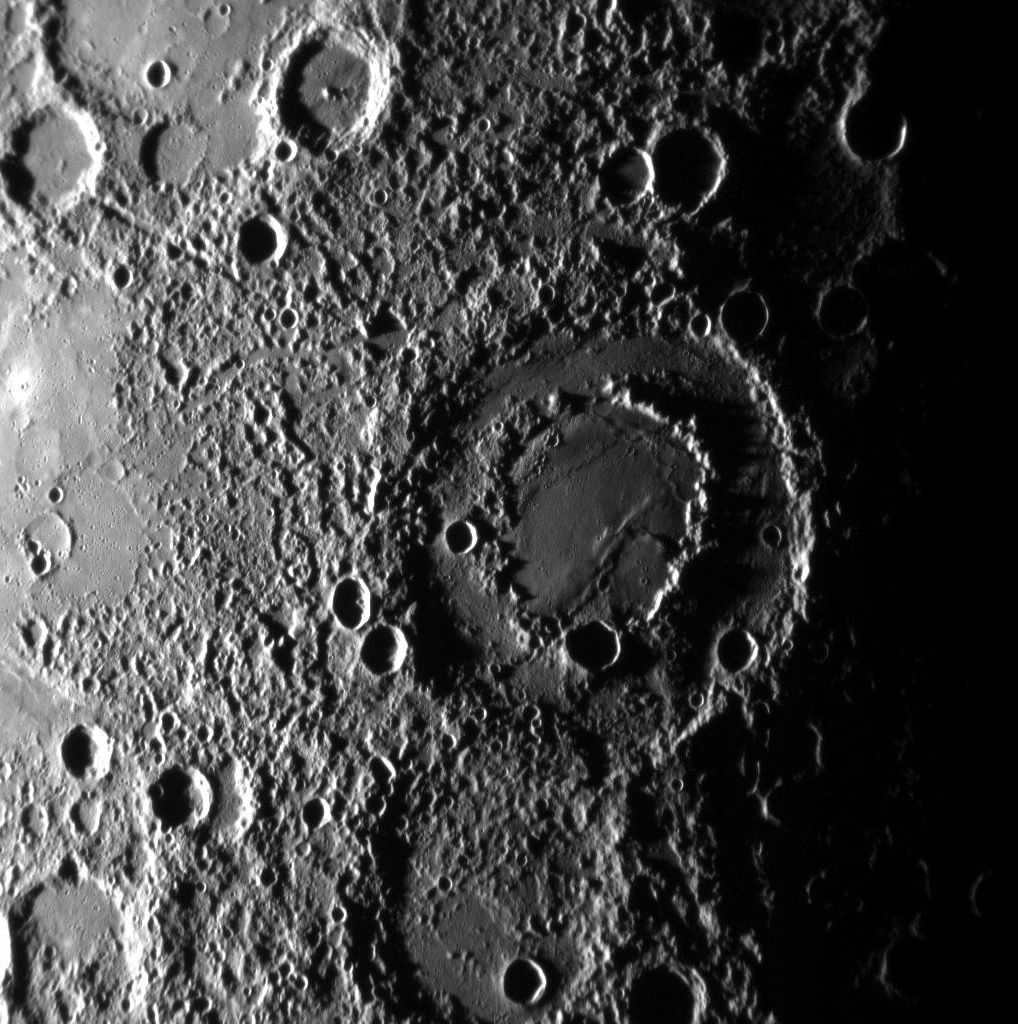
Voyager
The American Voyager program has proven to be an incredibly successful interplanetary mission. Launched in 1977, the program’s two spacecraft, Voyager 1 and Voyager 2, have been at the forefront of numerous discoveries.
Voyager 1, in particular, made history as the first spacecraft to capture detailed images of Jupiter and Saturn’s moons. Meanwhile, Voyager 2 had the opportunity to venture close to Europa and Ganymede – two large satellites from Jupiter’s Galilean group. The data collected by these spacecraft led to the groundbreaking hypothesis of liquid oceans beneath the icy crust of these moons, sparking discussions about the potential existence of life within these watery depths.
However, the achievements of the “Voyagers” do not stop there. Following their exploration of the planets, the spacecrafts ventured even further, reaching the outermost edges of our solar system. “Voyager 1” holds the record for being the fastest man-made object ever launched from Earth. It also holds another significant title – being the first human-made creation to enter the interstellar medium. This groundbreaking accomplishment confirmed the continued functionality of the equipment aboard.
The unique position of “Voyager 1” allows scientists to conduct studies on the interstellar medium until 2025, or until the plutonium fuel supply is depleted. Additionally, the upcoming journey of Voyager 2 towards the solar system’s outer limits and eventual entry into interstellar space has astrophysicists excited. This will enable independent observations and measurements that can be compared to the findings of Voyager 1.

Galileo
The main objective of the NASA AMS Galileo mission, which was launched in 1989, was to conduct a comprehensive study of Jupiter and its moons. The spacecraft successfully completed all of its planned scientific investigations.
The Galileo spacecraft made history by becoming the first and only probe to enter Jupiter’s orbit. Prior to this achievement, the AMS captured numerous images of Jupiter’s moons, including Europa, which provided evidence for the existence of subglacial oceans.
In 1994, Galileo witnessed the first recorded comet impact into Jupiter’s atmosphere. The high-resolution photographs captured by the spacecraft revealed large dark markings in the outer clouds of the planet, left behind by the collision.
In 1995, Galileo deployed its descent module into the atmosphere of Jupiter. To the astonishment of scientists, the density of the planet’s atmosphere was found to be less than anticipated, allowing the module to penetrate a remarkable 130 km into it. This enabled the module to relay back to Earth the initial measurements of temperature and pressure in both the outer and deeper portions of the colossal gas giant.
By 2003, the Galileo program had reached its conclusion, leading to the deliberate plunge of the orbiting module into the unforgiving atmosphere of Jupiter, resulting in its complete incineration.
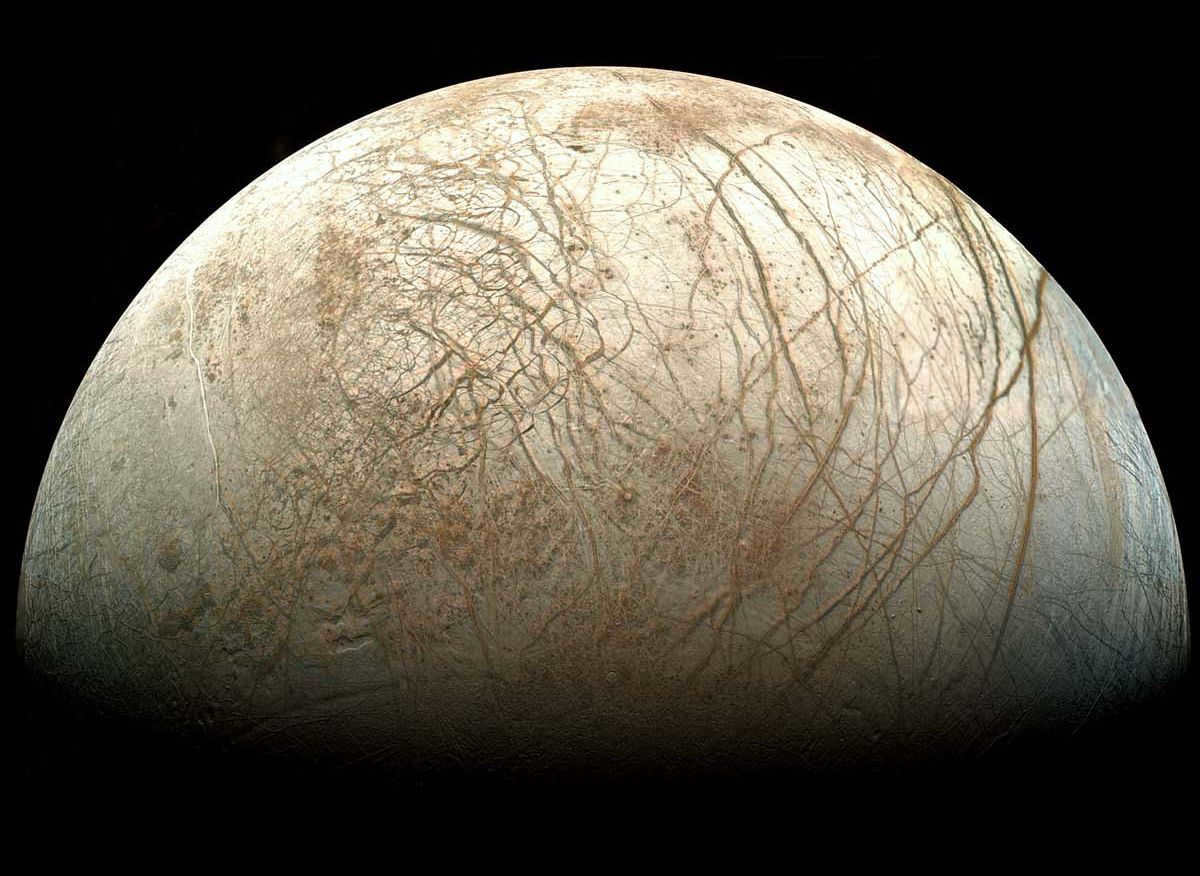
NEAR Shoemaker
The successful mission of Rosetta to a comet was preceded by the successful mission of AMS to an asteroid. In 1996, NASA launched the NEAR Shoemaker spacecraft to explore the geology and chemical composition of the near-Earth asteroid Eros.
During the initial flyby of the spacecraft near the asteroid in January 1999, the onboard computer software malfunctioned, leading to a loss of communication between NEAR Shoemaker and Earth for over a day. Additionally, a significant amount of fuel was consumed due to uncontrolled and unexplained engine starts during the anomaly. However, communication was gradually restored, and the malfunction was eventually resolved.
In February 2000, the NEAR Shoemaker spacecraft made history by becoming the first probe to orbit an asteroid. Once all the planned investigations were completed, the decision was made to land the probe on the asteroid’s surface. Despite low expectations, the spacecraft successfully touched down on Eros without any damage and transmitted valuable scientific data on the asteroid’s chemical composition to Earth for over two weeks. Eventually, the connection with NEAR Shoemaker was lost.
Another significant achievement related to asteroids is the success of the Japanese probe Hayabusa. Despite facing numerous technical problems and almost failing, Hayabusa managed to bring back soil samples from the asteroid Iotokawa to Earth in June 2010, marking the first time in history that such samples were retrieved.
The mission to explore the Saturn system, known as Cassini-Huygens, was a collaborative effort between the United States, Europe, and Italy. Its main objective was to study the gas giant’s moons and rings.
Launched in 1997, the Cassini spacecraft successfully completed its mission, capturing thousands of breathtaking images of Saturn, Jupiter, and their numerous moons. These images have provided valuable insights into the outer regions of our solar system.
Among the numerous significant scientific discoveries, such as the exploration of newly found Saturn moons and enigmatic “spokes” within the planet’s rings, the investigation of Titan stands out. The “Cassini” spacecraft successfully identified actual methane and ethane lakes within the dense atmosphere of Saturn’s largest moon, with one of them being comparable in size to the Caspian Sea. Undoubtedly, this marks the groundbreaking achievement of detecting surface lakes beyond Earth within the solar system.
In addition, “Cassini” also accomplished the successful testing of the General Theory of Relativity, the detection of several immense planetary hurricanes on Saturn, the distinction of being the first spacecraft to orbit Saturn in history, and a variety of other accomplishments.
The mission of the spacecraft has been prolonged two times, in 2008 and 2010. “Cassini” is currently undertaking scientific investigations in close proximity to Saturn. In 2017, the United States and Europe will make a decision regarding the subsequent extension of the mission; there are several possibilities that are being considered, including concluding the program with a deliberate impact on Jupiter or Mercury or embarking on a journey to the outer reaches of our solar system to explore Uranus and Neptune.

Huygens
The Huygens lander, which was launched along with the Cassini orbiter, warrants its own section.
On January 14, 2005, Huygens, which detached from Cassini, entered the atmosphere of Titan and safely touched down on its surface. The module not only became the first spacecraft to land on Titan, but also the first to land on a large celestial object in the outer solar system.
During its descent, Huygens successfully transmitted pictures of Titan’s landscape to Cassini (which, in turn, sent them to Earth), and then, after landing, images of its surface and data from its instruments.
It’s worth mentioning that certain anomalies close to the surface of Titan have led some scientists to speculate about the possibility of life on Titan. Specifically, there is a hypothesis that there could be unique life forms on Titan that have different characteristics than life on Earth, such as breathing hydrogen gas, consuming acetylene, and producing methane. However, these theories regarding the gas anomalies have yet to be substantiated.
The sun and the planets of our solar system are depicted, excluding Pluto and other dwarf planets. The relative sizes of the objects are shown accurately, but the distances between them are not to scale.
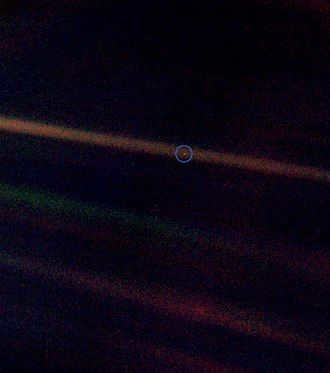
A photo was captured by Voyager 1 when it was 6.4 billion kilometers (4 billion miles) away from Earth. The streaks of light in the image are diffraction rays originating from the Sun (which is outside the frame on the left). This particular photograph is famously known as the Pale blue dot.
The exploration and discovery of the solar system involves observing, visiting, and expanding our knowledge and understanding of the celestial bodies that make up our “cosmic neighborhood.” [1] These bodies include the Sun, Earth, Moon, the major planets (Mercury, Venus, Mars, Jupiter, Saturn, Uranus, and Neptune), their moons, as well as smaller objects like comets, asteroids, and dust particles. [1]
The solar system, which consists of planets, moons, and various smaller objects orbiting around the sun, is like a cosmic playground for humanity. Although the distances between planets are vast, they can be overcome with the help of technology.
Background
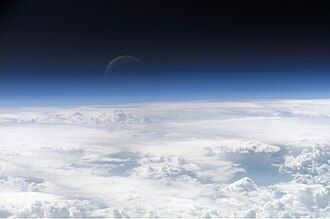
The ancient times and the initial observations
Observations through the telescope
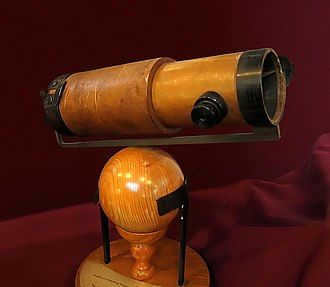
The initial exploration of the solar system was conducted through the use of a telescope, during which astronomers began the process of mapping celestial objects that were too faint to be observed with the naked eye.
Galileo made groundbreaking discoveries regarding individual entities within the solar system. He observed that the Moon was adorned with craters, identified sunspots on the Sun, and uncovered the presence of four satellites encircling Jupiter. [2] Following in Galileo’s footsteps, Christian Huygens made further contributions to our understanding of the solar system with the revelation of Saturn’s moon, Titan, and the unique shape of Saturn’s ring. [3] Giovanni Domenico Cassini later expanded our knowledge by discovering four additional satellites of Saturn and Cassini’s Division within Saturn’s rings. [4]
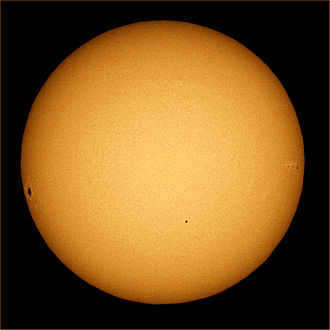
A photograph of the sun was taken using a telescope equipped with a specialized solar filter. The image clearly shows sunspots and limb darkening. Additionally, the planet Mercury can be seen transiting across the lower part of the sun’s surface.
In the year 1705, Edmond Halley made a significant realization. By analyzing repeated observations of a comet, he discovered that the same object returned every 75-76 years. This provided the first evidence that there were celestial objects other than planets orbiting the sun. Around the same time, in 1704, the term “Solar System” was first used in the English language.
In 1781, while searching for double stars in the constellation Taurus, William Herschel made an unexpected discovery. He observed what he initially believed to be a new comet, but further analysis of its orbit revealed that it was actually a previously unknown planet, Uranus.
In 1846, the irregularities in the orbit of Uranus led to the speculation that there must be a larger planet exerting gravitational pull on it. The calculations made by Urbain Leverrier and the Russian scientists eventually resulted in the identification of Neptune. [9] Leverrier’s observation of the excessive precession of Mercury’s perihelion orbit led him to propose the existence of a planet called Vulcan within the orbit of Mercury in 1859. However, this hypothesis turned out to be irrelevant.
Even though the question of when the solar system was truly “discovered” is open to debate, three observations made in the nineteenth century provided undeniable evidence of its nature and position in the universe. Firstly, in 1838, Friedrich Bessel successfully measured stellar parallax, which is the apparent shift in a star’s position caused by the Earth’s orbit around the Sun. This not only served as the first direct experimental confirmation of the heliocentric model, but also revealed the immense distance between the solar system and the stars. Secondly, in 1859, Robert Bunsen and Gustav Kirchhoff utilized a newly developed spectroscope to analyze the spectral signature of the Sun. They discovered that it was composed of the same elements as the Earth, thus establishing the physical similarity between our planet and other celestial bodies visible from Earth. [10] Following this, Father Angelo Secchi compared the Sun’s spectral signature with that of other stars and found them to be virtually identical. This realization led to the hypothesis that other stars might possess their own systems, although it took nearly 140 years to confirm this.
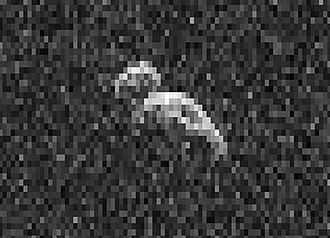
A radar image of the asteroid 2006 DP14, a small asteroid that came close to Earth in early February 2014.
Percival Lowell concluded that there must be another planet, known as “Planet X”, beyond Neptune due to apparent discrepancies in the orbits of the outer planets. After his death, the Lowell Observatory conducted a search that eventually led to the accidental discovery of Pluto by Clyde Tombaugh in 1930. However, Pluto was too small to affect the orbits of the outer planets. It was initially classified as a planet, but in 2006, it was reclassified as a dwarf planet by the International Astronomical Union (IAU) after the discovery of other similarly sized objects in its vicinity. [9]
In 1992, scientists made a groundbreaking discovery when they found evidence of a planetary system orbiting the pulsar PSR B1257 + 12. This marked the first time that a planetary system other than our own had been detected. Just three years later, another major discovery was made when astronomers identified 51 Pegasi b, the first extrasolar planet found around a star that is similar to our Sun. Since then, a total of 2,687 extrasolar systems have been observed as of 2017.
In addition to these findings, another important discovery was made in 1992 by astronomers David S. Jewett and Jane Luu. They uncovered an object known as 15760 Albion, which turned out to be the first of its kind in a new region called the Kuiper Belt. This region is similar to the asteroid belt but consists of icy objects, including Pluto and Charon. These discoveries have expanded our understanding of the universe and the diverse range of planetary systems that exist beyond our own.
Mike Brown, Chad Trujillo, and David Rabinowitz made an announcement in 2005 about the finding of Eris, a scattered disk. Originally, it was believed that Eris was bigger than Pluto, which would have made it the largest object found in orbit around the Sun since Neptune. [14] New Horizons’ Pluto flyby In July 2015, more precise measurements were taken of Pluto, revealing that it is slightly larger but less massive than Eris.
The story of how the location of the planet Neptune was determined is quite extraordinary. The discovery of this celestial body was almost accidental and, interestingly, it first occurred on paper through mathematical calculations. Some scientists refer to Neptune as “a planet discovered with the stroke of a pen.”

The planet Neptune could have been discovered by Galileo Galilei, but he mistakenly identified it as a star. Credit: ru.wikipedia.org.
Discovery and Naming of the Eighth Planet
Neptune was initially observed by Galileo Galilei in the early 17th century, but he misidentified it as a star. By 1612, the planet had moved further away from Earth, making it undetectable with the astronomical technology of that time.
In the first half of the 19th century, the English scientist T. J. Hussey proposed that the unusual movement of Uranus in its orbit could be explained by the presence of a large celestial object nearby.
Research was initiated by a group of scientists. They made a remarkable finding of a previously undiscovered celestial object, and both J. Adams and W. Leverrier asserted their right to be acknowledged as its discoverer. Fortunately, in 1846, the controversy was settled, and both astronomers were officially acknowledged as the pioneers of this discovery.

The joint efforts of mathematicians John Couch Adams (on the left) and Urbain Jean Joseph Leverrier (on the right) brought about the discovery of Neptune in 1846 Credit: ru.wikipedia.org.
However, towards the end of the 20th century, scientists concluded that it is more accurate to credit W. Leverrier as the individual who first discovered the eighth planet. Leverrier’s calculations had a smaller margin of error.
The celestial body was named after the astronomer, despite other researchers advocating for the names Oceanus or Janus. Leverrier himself bestowed the eighth planet in the solar system with a name inspired by the Roman god of the seas, due to the blue hue of its surface.
What led to the scientific discovery of Neptune

The discovery of Neptune provided concrete evidence for the heliocentric structure of our solar system, as proposed by Copernicus. This momentous finding, credited to NASA, not only shed light on the orbital behavior of Uranus but also solidified the validity of both Copernicus’ heliocentric theory and Newton’s theory of universal gravitation.
Moreover, this discovery highlighted the potential for celestial bodies to be detected through mathematical calculations, a significant advancement beyond the limitations of direct visual observation.
After the removal of Pluto from the planetary list, Neptune took on the role of being the farthest celestial object in our solar system from the Sun. It maintains an average distance of 4.5 billion kilometers from the Star, which takes over 4 hours for its light to reach here.
Due to the high eccentricity of its orbit (second only to Venus), Neptune occasionally finds itself closer to the Sun than its neighboring planet Uranus, and at other times, it is even further away than Pluto.
Neptune gracefully travels through the vast expanse of space at a velocity of 5.5 kilometers per second, completing a full orbit in nearly 165 Earth years. It marked the beginning of another local year in July 2011. Similar to Earth, Neptune also experiences changing seasons, with each one lasting approximately 40 years.
Neptune, situated at varying distances from Earth ranging from 4.3 to 4.6 billion kilometers, remains elusive to the naked eye, necessitating the use of a telescope equipped with a lens measuring at least 250 millimeters and a magnification of 200 times. Upon observation, Neptune presents itself as a magnificent sapphire orb, owing to the abundance of methane within its gaseous envelope.

Neptune takes 16 hours to complete one rotation on its axis, and it also takes the same amount of time for its magnetic field to move along with the planet. The behavior of its atmosphere is different due to the absence of a solid surface. The gas shell near the equator completes one revolution in 18 hours, while near the poles it takes 12 hours. This is the reason behind the powerful hurricanes on Neptune, which are the strongest in the entire solar system. The speed of these hurricanes can reach up to 600 m/s.
The largest known vortex on Neptune is the Great Dark Spot, measuring approximately 13×6.5 thousand kilometers (comparable to the size of Earth). The winds at the boundaries of this vortex reached supersonic speeds. The shape of the spot was constantly changing, and it is unclear how long it lasted on the planet.

The planet Neptune was discovered by the Voyager-2 probe in 1989. The exact time of its disappearance is not clear, as the absence of the hurricane was only recorded in 1994. The Hubble Space Telescope attempted to photograph the object.
Neptune has several main physical characteristics:
- It has an average radius of 24,600 km;
- Its mass is 100 sextillion tons (sextillion is 10 to the 21st degree);
- Its average solid density is 1.6 g/cubic centimeter.
Among all the planets in the Solar System, Neptune ranks third in mass and fourth in diameter. It is 17 times heavier than Earth and 4 times its equatorial length.
Neptune has a similar structure to Uranus, with the upper part of the planet consisting of a gaseous shell that makes up about 20% of its mass. Below the gaseous shell is the icy mantle of Neptune, which is composed of a mixture of liquid methane and ammonia. Despite its name, the icy mantle is more akin to a boiling ocean, with temperatures ranging from +1700 to +4700°C. Deeper within Neptune, there is a core composed of silicon salts and pure iron, where temperatures can reach up to +5500°C.
Neptune’s upper atmosphere is primarily composed of hydrogen (80%) and helium (20%). As you venture closer to the surface, the methane levels in the air increase, resulting in the celestial body’s distinct blue hue. The lower layers of the gas envelope often contain clouds of hydrogen sulfide and ammonia.
Neptune’s Ring System
The discovery of Neptune’s rings occurred approximately 120 years after the planet itself was first observed, specifically in 1968. Initially, their existence was merely a scientific hypothesis. It was not until 1989, when the Voyager 2 spacecraft conducted its mission, that the presence of the rings was definitively confirmed.
Comprising a total of five rings, these structures are positioned at distances ranging from 42,000 to 63,000 kilometers from the planet’s core. Composed of a combination of silicon salts and water ice, their reddish tint is indicative of the presence of organic matter.
All of these structures are named after scientists who have made significant contributions to the research of Neptune:
The final ring is diverse and consists of 5 distinct arcs, each with its own designated name. Currently, scientists are unable to provide a definitive explanation for this phenomenon. It is possible that the gravitational forces of Neptunian satellite Galatea, which orbits in close proximity to this ring, prevent the arcs from merging into a cohesive unit.

Triton, a moon of Neptune, reflects 60% of the light it receives, which is at least 6 times more than the Moon reflects. This information is credited to NASA.
Moons of the blue giant
Neptune has a total of 14 known natural moons, with the largest one being Triton. Triton was discovered 2 weeks after the discovery of the planet itself. This icy moon is unique among its neighbors as it moves in a retrograde orbit.
Over time, Triton is gradually getting closer to Neptune and will eventually collide with it, forming a sixth ring around the planet. Triton’s mass accounts for approximately 99.5% of the total mass of all the moons orbiting Neptune.
The Nereid was responsible for the discovery of the second moon of Neptune in 1949. To this day, this celestial body remains one of the least explored in our solar system. The Voyager 2 station made a groundbreaking discovery in 1989 when it detected six additional objects. As for the most recent findings, the last small satellites were only identified in the 21st century.
The term “planet” originates from the Greek word meaning “wanderer.” Ancient civilizations recognized these “moving stars,” but it wasn’t until the invention of telescopes that astronomers were able to observe them in great detail.
When you think of the word “planet,” you probably imagine a huge, round object like Jupiter or Saturn. However, the meaning of the term has evolved over time. The most recent definition, which is still debated today, was established in 2006 at a meeting of the International Astronomical Union (IAU) after the discovery of several celestial bodies in the outer regions of our solar system.
According to this definition, a planet is an object that orbits around the Sun, is nearly spherical in shape, is not a moon of another object, and has cleared its orbit of other similar bodies.
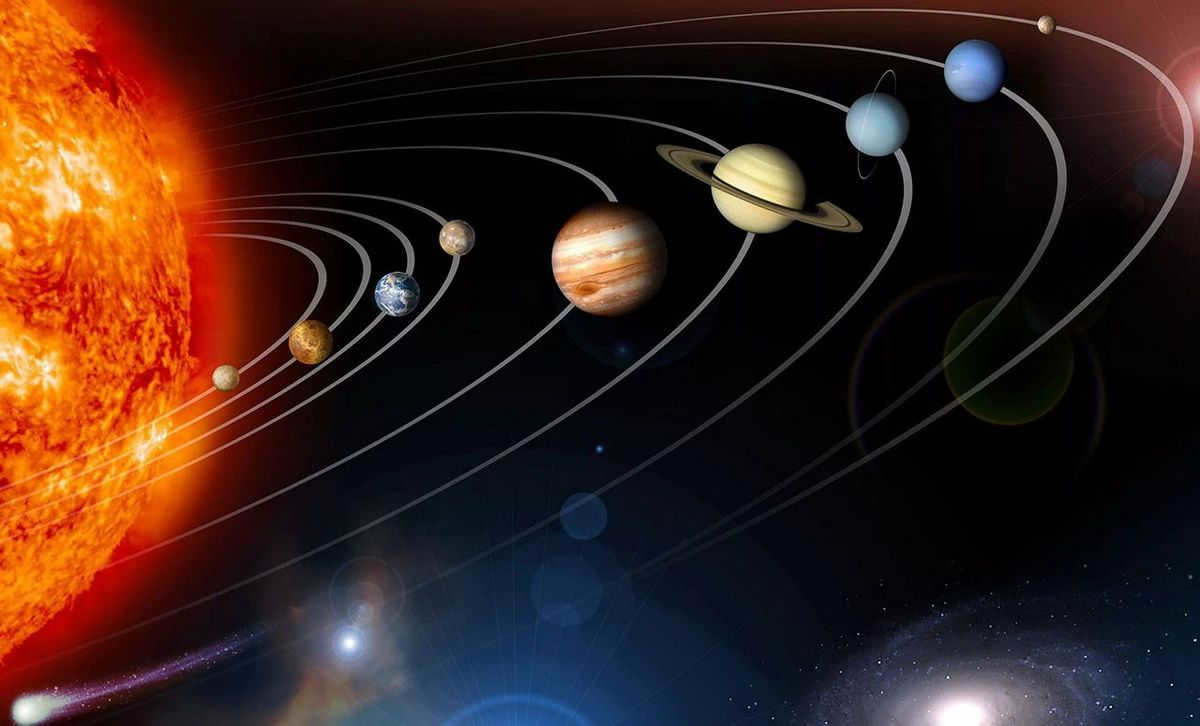
Simultaneously, the International Astronomical Union (IAU) sanctioned a fresh categorization for heavenly bodies – the “dwarf planet”. These entities satisfy all the requisites of a planet, barring one: they are unable to rid their orbital vicinity of any “debris”. The adoption of these novel definitions entailed the demotion and reclassification of Pluto, which had hitherto been regarded as the ninth planet in our solar system, as a dwarf planet.
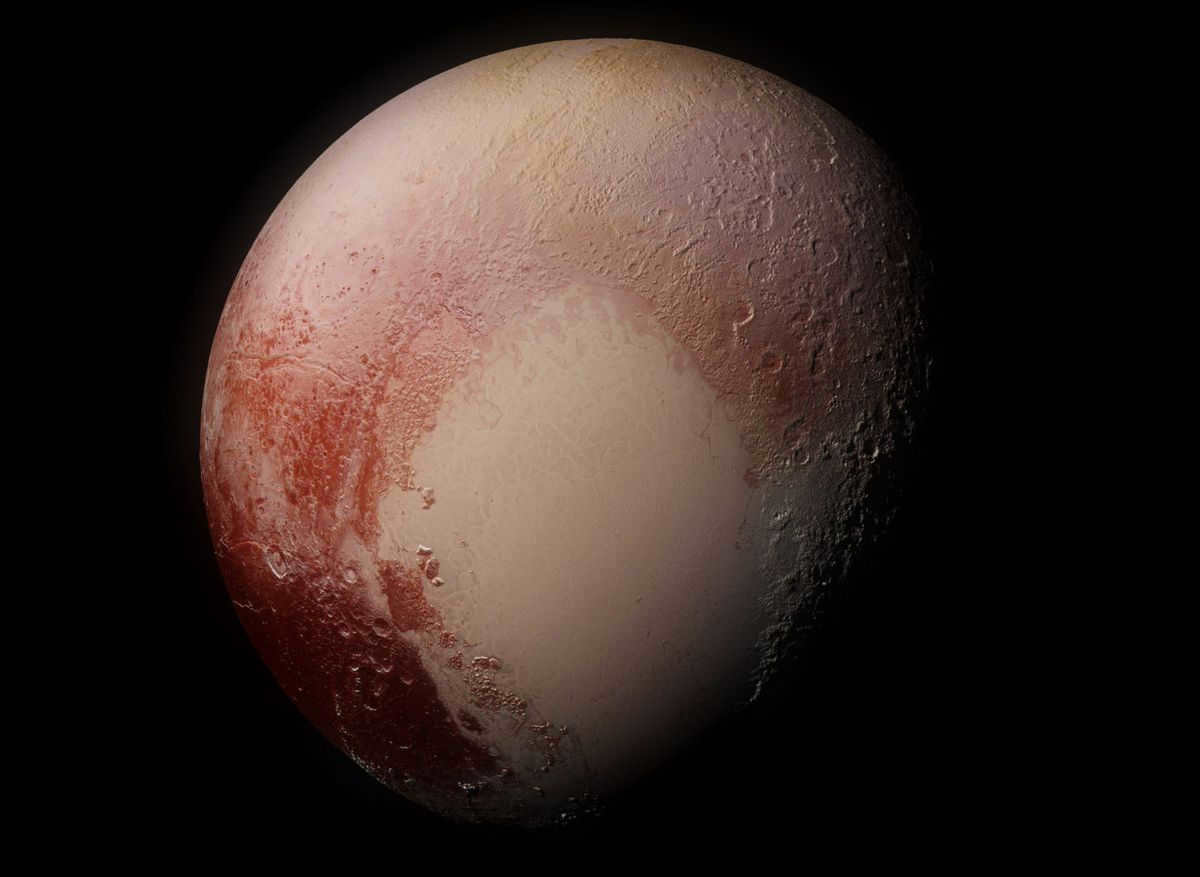
However, not all scientists were in consensus regarding the reclassification of Pluto. The debate intensified after NASA’s New Horizons spacecraft conducted a flyby of the dwarf planet in 2015, revealing a multitude of intriguing geological characteristics. These included towering mountains that reached heights of up to 3,500 meters, a methane “heart,” and an enigmatic icy landscape reminiscent of snake skin. Subsequently, members of the New Horizons team have argued that Pluto should be reinstated as a full-fledged planet, aiming to sway public opinion and restore its former “solid” status.
Planet History
The concept of a “planet” originates from the Greek word meaning “wanderer.” Many ancient civilizations observed these celestial bodies that appeared to move across the sky, but it wasn’t until the invention of telescopes in the 1600s that astronomers were able to study them in detail. This marked the first time that people became aware of Jupiter’s moons, Saturn’s rings, and the icy polar cap on Mars.
The use of telescopes also unveiled the existence of celestial objects that were previously unknown due to their great distance or small size, making them invisible to the naked eye. On March 13, 1781, English astronomer William Herschel discovered Uranus, and on January 1, 1801, Italian astronomer Giuseppe Piazzi first observed Ceres, which was initially classified as a planet but was later reclassified as an asteroid. Finally, in 1846, Neptune was discovered.
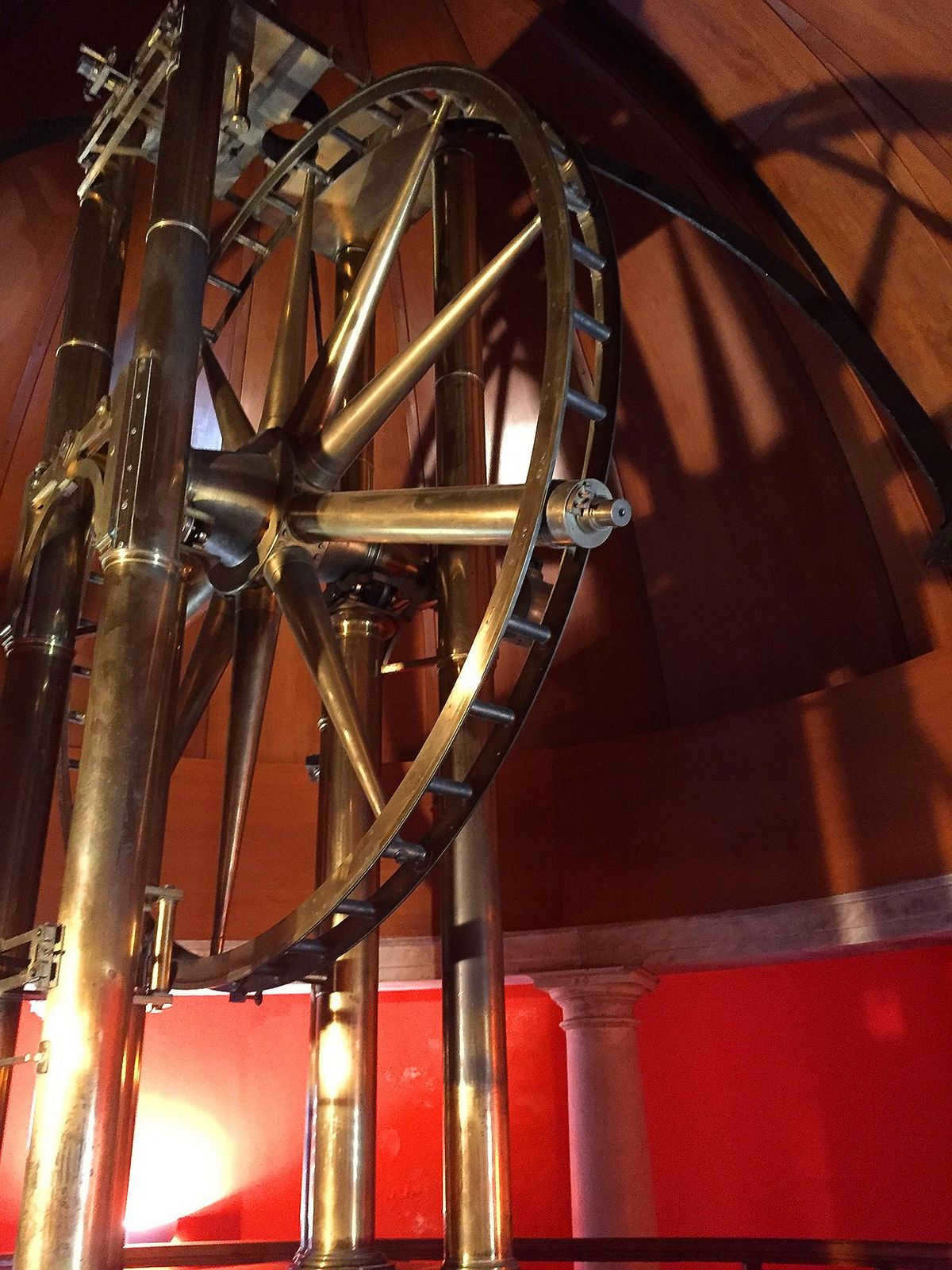
In their quest to find a massive celestial body known as “Planet X,” astronomers diligently explored the far reaches of our solar system, suspecting that its presence was affecting the trajectories of Uranus and Neptune. Subsequent observations, however, debunked these initial fluctuations. Nevertheless, it was during this investigation in 1930 that American astronomer Clyde Tombaugh stumbled upon an object now known as Pluto. Initially classified as a planet, this newly discovered entity would go on to captivate the imaginations of scientists and enthusiasts alike.
Exploring new frontiers
There was a period of calm and for an extended duration, no celestial objects similar in size to Pluto had been identified. However, everything changed in the 2000s when Michael Brown, a young astronomer hailing from the California Institute of Technology (USA), initiated a search for entities in the outer region of the solar system as part of his research initiative.
In a brief span of time, Brown and his team uncovered numerous sizable icy entities beyond the orbit of Neptune. By that point, their discovery was not unexpected, as the existence of the Oort Cloud, which houses trillions of comets, had already been hypothesized. Nevertheless, the magnitude of the “trans-Neptunian objects” discovered by Michael Brown captured the attention of fellow astronomers.
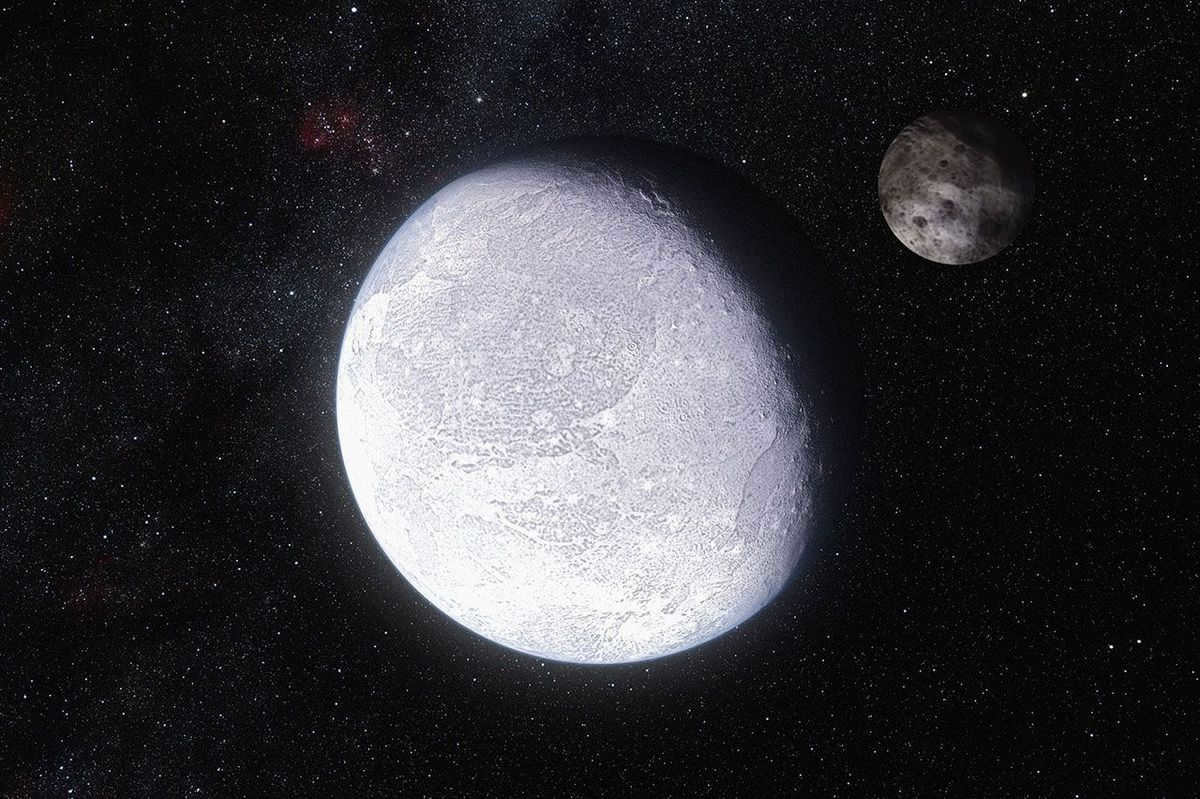
One of the notable findings by the American astronomer consists of Kvavar, Sedna, Haumea, Erida and its companion Dysnomia, as well as Makemake. These celestial bodies were all detected within a relatively brief timeframe spanning from 2001 to 2005. Erida, initially named “Xena,” was found to be sufficiently large that it was widely regarded as the tenth planet in the solar system by numerous publications.
Following a series of breakthroughs, the IAU conducted a thorough examination of the evidence and convened the XXVI assembly in Prague, Czech Republic, in 2006. It was during this assembly that a vote was cast to redefine the status of certain celestial bodies. Consequently, Pluto, Eridu, and other celestial objects of similar magnitude were downgraded by the delegates.

Based on the most recent definition, a dwarf planet is a celestial object that orbits the Sun and has a round or approximately round shape, but is smaller in size compared to Mercury. Currently, there are only five officially recognized dwarf planets, namely Ceres, Pluto, Erid, Makemake, and Haumea.
There are numerous other heavenly bodies that have the potential to be added to this list in the future. Some examples include Kvavar, Sedna, Orcus, and Salacia. However, further observations are needed to determine their exact sizes. Furthermore, according to certain astronomers, there could be as many as 200 dwarf planets located within the Kuiper belt.
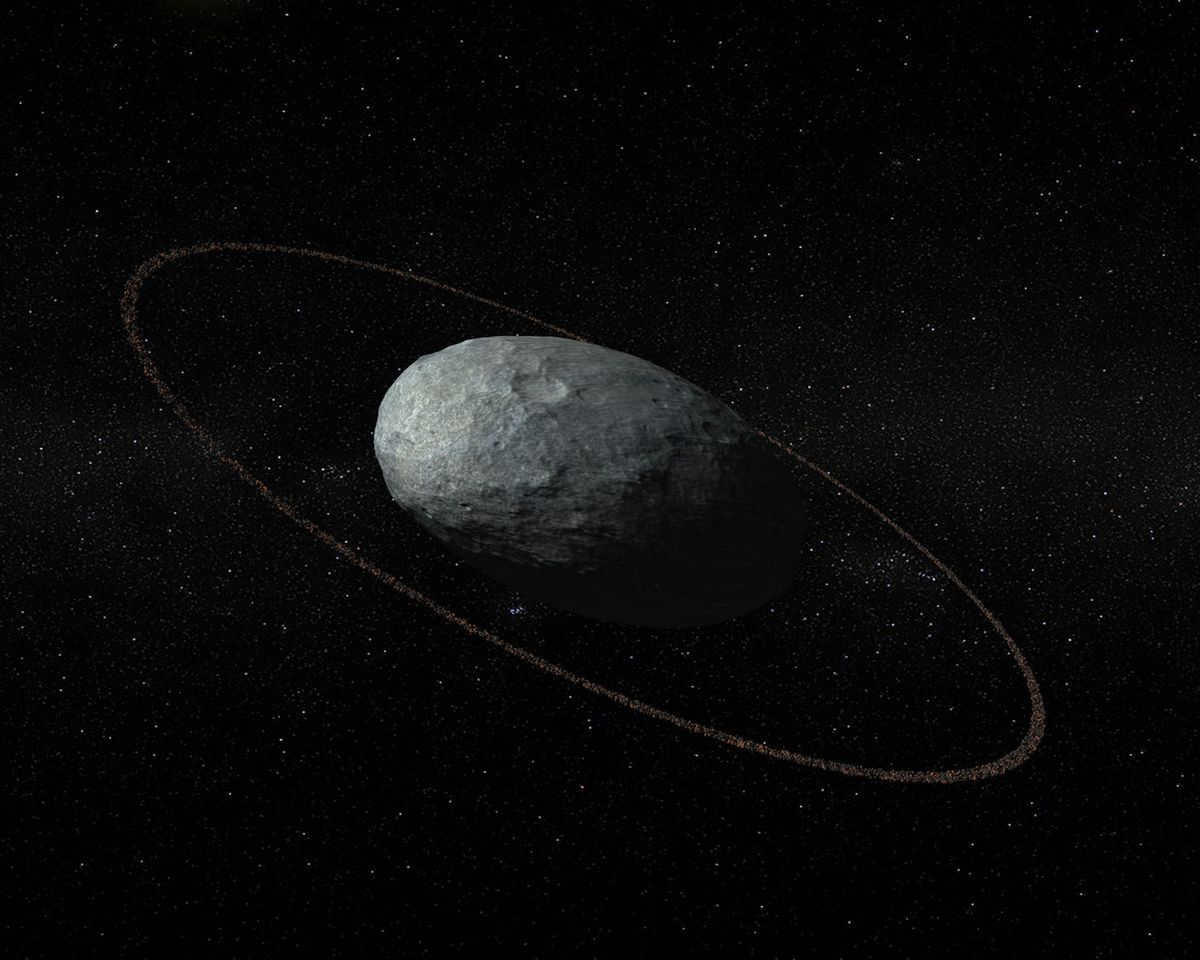
However, even years after the vote, there are still scientists who classify Pluto as a planet. For instance, in early 2014, NASA released a video from the New Horizons mission’s Science Conference where multiple speakers repeatedly referred to it as a “planet.” Alan Stern from NASA frequently presents his arguments for why Pluto deserves to be recognized as a planet, pointing out flaws in the IAU’s definition and highlighting the fact that not all planets are capable of clearing their orbit.
The discovery of the celestial body Mars dates back to ancient times. It is unclear exactly when Mars was first observed, as its brightness made it visible to the naked eye for over a millennium. The exact individual who first noticed Mars remains unknown, but the history of references to this celestial object can be traced.
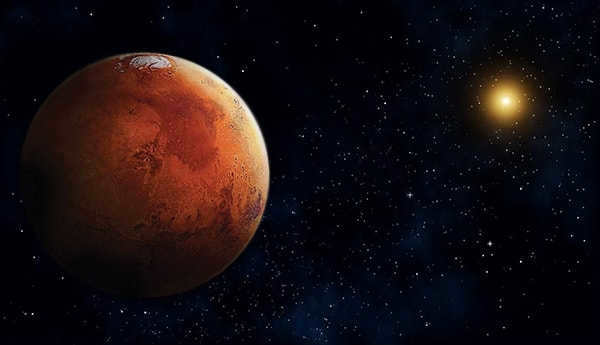
Discovery of Mars – When and by Whom
The question of who discovered Mars does not have a definitive answer. However, we can look at historical references and discoveries to trace the planet’s past.
Mars was first observed around 1500 B.C. during a time when the Egyptians were fascinated by the sky and stars, which played a significant role in their daily lives.
Ancient Egyptian astronomers documented a star that appeared to change its position in the sky. This observation allowed them to identify Mars, as it is one of the few celestial objects visible to the naked eye.
Ancient Egyptian texts on astronomy contain information about constellations, gods, and planets, along with their symbolic depictions.
Babylonian astronomers developed mathematical techniques for determining the planets and measuring their movement. Ancient Greek astronomers, building upon the knowledge of their predecessors, created a precise geocentric model in which the Earth is the center of the universe. However, this model could not explain the peculiar behavior of Mars during opposition, when it would abruptly halt, change its motion, and then resume its previous path. The introduction of the heliocentric concept, with the Sun at the center of the universe, in 250 BC provided a clearer understanding. Unfortunately, this perspective was forgotten for many years.
The precise discovery of Mars and the year it occurred may forever remain a mystery. It can only be speculated that it happened many centuries ago during the period when humans first started observing celestial bodies in the heavens.


Ancient Findings on the Planet Mars
In 1543, Nicolaus Copernicus reintroduced the heliocentric model of the universe, which proposed that the Sun is the central body around which the planets orbit. This theory was met with disapproval from the Church, although many astronomers found it intriguing.
Johannes Kepler made groundbreaking discoveries about Mars based on the observations made by Tycho Brahe over a span of 22 years. Kepler concluded that all planets move in elliptical orbits, contrary to the popular belief among his contemporaries that planets revolve in circular paths around the Sun.
The field of planetary studies is constantly being updated with new information, thanks in large part to advancements in optical instruments.
In 1610, Galileo Galilei became the first person to observe Mars through a telescope.
Then, in 1659, Dutch astronomer Christian Huygens made several important discoveries while studying the planet using a telescope. During his observations, Huygens noticed a dark spot on the surface, which turned out to be a mountain plateau known as the Great Sirte. He also determined that the length of a Martian day is approximately 24 hours by tracking the movement of the Big Sirte on the planet’s surface. Eight years later, Giovanni Cassini calculated that Mars’ rotation period is actually 24 hours and 40 minutes.
An intriguing finding took place in 1877. The American astronomer Asaph Hall made the discovery of two moons orbiting the planet. Interestingly, this was predicted by Jonathan Swift a century and a half earlier.
Fascinating – African Scientist Rediscovers Mars
Recently, on March 20 (2018), an amusing incident occurred. Peter Dansby, a Mars researcher from South Africa, posted an appeal on the online scientific community ATel, regarding the detection of a peculiar transient phenomenon in brightness (a sudden burst of light) that was not present at the same location on March 8.
The cosmologist reached out to his colleagues, requesting their assistance in studying this unknown object. However, within half an hour, he realized his mistake and posted a second message, apologizing for the confusion. The post clarified that the transient turned out to be a planet that is well-known, even to schoolchildren.
The Internet community was entertained by the event featuring the African scientist who made the groundbreaking discovery of Mars, resulting in Peter being awarded a comical certificate. The incident served as a valuable lesson for the South African native, prompting the cosmologist to pledge to thoroughly verify the data in the future.





